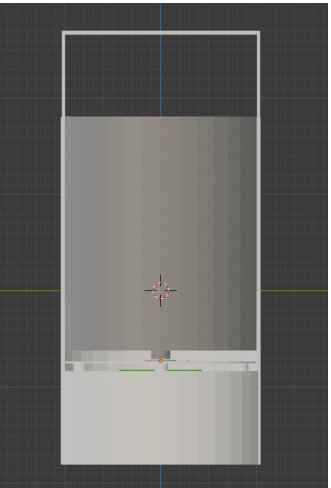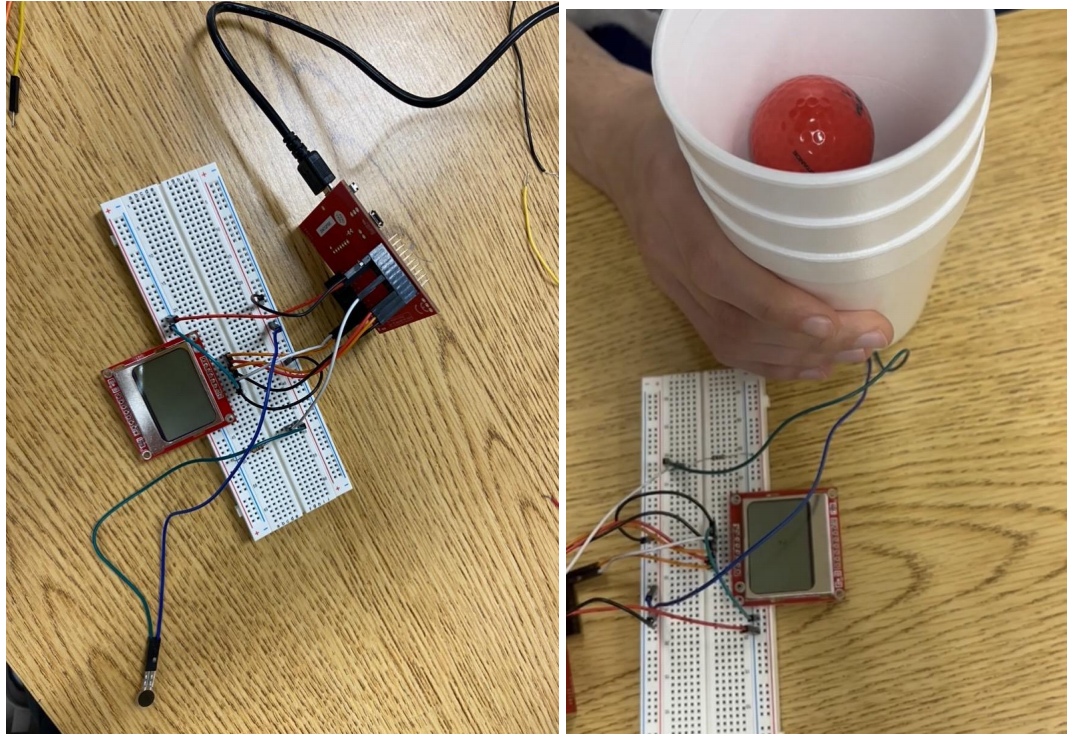Joseph Gorak
Smart Golf Hole
For an embedded systems course, the final project was to create some kind of product that utilizes a
microcontroller. For this project, my team and I decided on
creating a smart golf hole to aid in practice. The idea is relatively simple: use a force sensing resistor to
detect whenever a golf ball enters the hole. In an idealistic
scenario, this system would be hooked up to bluetooth and can connect to the users phone through an
application. As there was little time and resources for development, the team had to
settle with detection through an LED screen.
An example prototype model that I had developed is seen below. The system utilizes a cup within a cup
with a detachable handle. The outer cup will hold the hardware in its bottom where
the inner cup will have a point concentrated on the force sensing resistor. The microcontroller is programmed
to detect any spike that occurs from the sensor. This means, any time the ball will enter the
cup, the force of it hitting the bottom will trigger a spike in the sensor.
I had also developed a PCB board diagram for the electrical wiring of the system. It is extremely simple
as it just requires a singular input and singular output wiring.
The input would be the sensor whereas the output would be the LED. In an ideal system, the output would be a
bluetooth device that is connected to an application.

Testing and Implementation
Once the microcontroller was programmed, it is important to go through testing to ensure the system works
properly. A lightweight cup was loosely held above the
force sensing resistor. Gravity had most of the initial force against the sensor. Whenever a golf ball would
enter the hole, it appeared that the sudden force would increment
the LED by one. This was tested on more golf balls at the same time, and each time, there would be a proper
increment. Although, when there were more than 3 balls in the hole at
once, the system appeared to become less accurate and may miss an increment or double increment.
If there was more time for development, then a proper model would have been designed and 3D printed for
testing. Blueooth capability would also
be integrated for a more complete and comprehensive system. A simple phone application would also go under
development.

Lessons Learned
This project offered a wonderful opportunity to develop an embeded system. It honed my skills in c++
programming, product planning, and wiring and electrical
diagram creation. As it was a multi person group, each person was able to contribute in sharing ideas,
prototype development, and general programming. As a majority of the
course was programming the microcontroller for blinking LEDs, this allowed for a real world development of a
product.
Skills Learned:
- Microcontroller programming through C++
- Prototype planning and development
- Construction of electrical diagrams and PCB boards